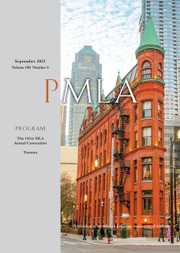Article contents
Writing Gone Wilde: Homoerotic Desire in the Closet of Representation
Published online by Cambridge University Press: 23 October 2020
Abstract
The name Oscar Wilde has become one of the best-known indexes of late nineteenth-century male homoerotic desire. To situate Wilde's emergence as “a homosexual” in late nineteenth-century literary contexts and thereby explore the ways that sex-gender ideologies shape specific literary works, I focus first on Teleny, a novel widely attributed to Wilde and one of the earliest examples of male homoerotic pornography. Then, by analyzing the more celebrated and yet manifestly “straight” text The Picture of Dorian Gray, I illustrate that, even in the absence of explicit homosexual terminology or activity, a text can subvert the normative standards for male same-sex behavior. In considering how these works challenge the hegemonic representations of male homoerotic experience in late Victorian Britain, I suggest that textual depictions of male same-sex experience both reproduce and resist the dominant (hetero)sexual ideologies and practices.
- Type
- Research Article
- Information
- Copyright
- Copyright © Modern Language Association of America, 1987
References
Works Cited
- 57
- Cited by


